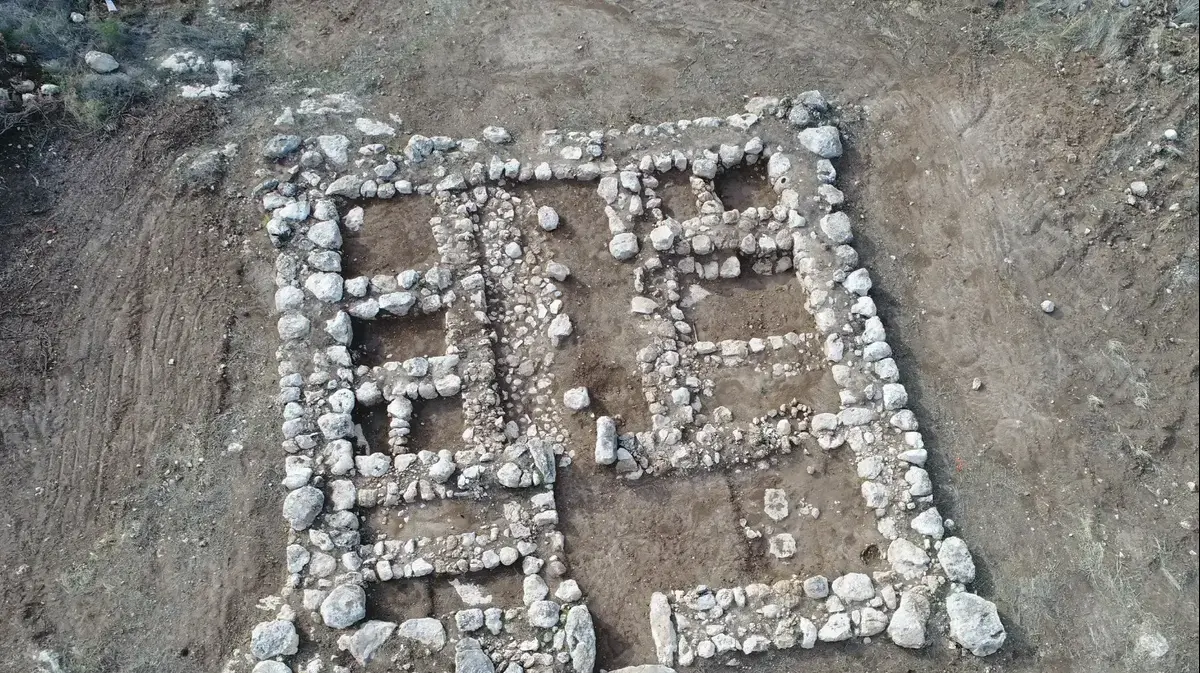- Tourism
- news
A fortress from the Judges' period was discovered in excavations near Kiryat Gat
A fortress built 3200 years ago, in a Canaanite attempt to defend itself against the intensification of the Palestinian enemy, was uncovered near Kibbutz Gal-On. Inside the citadel, a courtyard paved with stone slabs and pillars in the center was also exposed, and hundreds of pottery vessels, some intact, such as a bowl and a cup used for worship, were exposed in the castle rooms.
Tags- Archeology
- fortress
- Qiryat Gat
Ziv Reinstein
Sunday, 23 August 2020, 11:47- Share on Facebook
- Share on WhatsApp
- Share on general
- Share on general
- Share on Twitter
- Share on Email
A Canaanite fortress from the middle of the 12th century BC - the days of the biblical judges, was unearthed in excavations by the Israel Antiquities Authority near Kibbutz Galon near Kiryat Gat.
According to archaeologists Saar Ganor and Itamar Weisbain of the Israel Antiquities Authority, "the fortress we discovered provides a glimpse into the geopolitical reality described in the Book of Judges, in which the Canaanites, Israelis and Philistines struggle with each other."
According to them, during this period the land of Canaan was ruled by the Egyptians, and its inhabitants were their protégés. But then, during the 12th century, two other major players appeared in the region: the Israelis, and the Philistines, and thus began a series of bloody territorial struggles. The Israelites settled in unfortified settlements on the main mountain boulevard, and the Philistines, for their part, gained great power in the area of the southern coastal plain and they established large cities in Ashdod, Ashkelon, Ekron and Gat. In an attempt to occupy more territory, the Philistines confronted the Egyptians and Canaanites on the border line, which apparently passed between the Philistine winepress kingdom and the Canaanite Lachish kingdom in the Guvrin River.
More on Walla! NEWS
The Israelis who eat every day at the chef's restaurant at their home
In collaboration with Beit BalevTo the full article
"Provides a glimpse into the geopolitical reality described in the Book of Judges." The fortress that was discovered near Gal-On (Photo: Saar Ganor, Israel Antiquities Authority) This is what the fortress in Gal-On looked like (diagram: Itamar Weisbein) Hundreds of pottery vessels were exposed in the fortress rooms (Photo: Saar Ganor, Israel Antiquities Authority)The Philistines are to blame
It seems that Galon Fortress was built out of a Canaanite / Egyptian attempt to deal with the new geopolitical situation. In mid-12th century BC, the Egyptians abandoned Canaan, and where Egypt. Departure brought tremendous destruction of Canaanite cities were left without protection - are responsible for the destruction it seems Philistines.
According to Ganor and Oiisbiin, "the judges Bible stories clearly illustrate the reality and complex geopolitical struggle to control territory, re-organization of the political forces in Israel. "
fortress sells other sites excavated in the country, and identified Gee governor" of Egypt. the fortress was established a strategic location, which could be expected on the main road that ran along Nahal Guvrin - A road that connected the coastal plain to the Judean Plain. The
citadel is 18x18 meters in size, and there are towers at the four corners. Hundreds of pottery vessels, some intact, including special vessels such as a bowl and a cup, which were probably used for worship and a large number of bowls, were exposed in the rooms of the citadel.
According to Talila Liebschitz, director of the community and forest department in the southern part of the Jewish National Fund, "Galon Fortress provides a fascinating glimpse into the story of a relatively unknown period in the country's history, and is a tourist and experiential attraction for visitors. South of the Jewish National fund. instead of a campground and explanatory signs empowering archaeological experience nature and the forests of the Jewish National fund. "
the ruins were uncovered with the help of students of the Land of Israel studies school multidisciplinary Be'er Sheva, members of the pre-military Nahshon, and many volunteers. this is part of From the policy of the Israel Antiquities Authority, to bring the general public, and in particular the younger generation,
closer to archeology.
- Share on Facebook
- Share on WhatsApp
- Share on general
- Share on general
- Share on Twitter
- Share on Email

